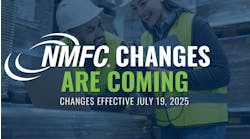New drivers to the trucking industry seeking to obtain a commercial driver’s license (CDL) will be required to show proficiency in both knowledge training and behind-the-wheel training on public roads under the new entry-level driver training final rule to be published tomorrow by the U.S. Dept. of Transportation’s Federal Motor Carrier Safety Administration (FMCSA).
That instructional program, says FMCSA, will have to meet an agency standard. The agency said it anticipates that “many entities currently providing entry-level driver training, including motor carriers, school districts, independent training schools, and individuals will be eligible to provide training that complies with the new requirements.”
“Ensuring that drivers are properly trained is a critical element in improving road safety for everyone,” said U.S. Transportation Secretary Anthony Foxx. “The entry-level training standards for large truck and bus operators put forth today exemplify a commitment to safety from a broad coalition of commercial motor vehicle stakeholders.”
On March 4, FMCSA announced a notice of proposed rulemaking (NPRM) following months of a “negotiated rulemaking.” Following years of being unable to create a rule that would govern entry-level driver standards, the agency convened a committee in 2014 to try and craft a rule. That panel provided the recommendations that would make up the NPRM, which initially included 30 hours of behind-the-wheel (BTW) training.
According to FMCSA, the final rule incorporates many of the recommendations issued by the committee, made up of 25 stakeholders and FMCSA representatives.
The NPRM proposed no minimum number of hours that driver-trainees must spend on the theory portions of any of the individual curricula, but it did propose that Class A CDL driver-trainees must receive a minimum of 30 hours of BTW training, with a minimum of 10 hours on a driving range. Driving on a public road would also be required, and Class A CDL driver-trainees may fulfill this requirement by either driving 10 hours on a public road, or by driving 10 public road trips (each no less than 50 minutes in duration).
However, in the final rule, those minimum number of hours for either the knowledge or BTW training have been eliminated. Instead, FMCSA said that “training providers must determine that each CDL applicant demonstrates proficiency in all required elements of the training in order to successfully complete the program.”
However, driver-trainees must achieve at least an 80% score on the theory assessment.
The American Trucking Assns., which opposed the proposed minimum hours requirement, was pleased with final rule.
“At the conclusion of the negotiation, ATA expressed our disappointment the agency appeared poised to go with an hours-based training regimen, but we were pleased and surprised to see they eschewed an arbitrary hours threshold in favor of a skills-based standard,” ATA Director of Safety Policy P. Sean Garney.
“ATA has consistently advocated that skills, not simply time spent in a classroom or behind the wheel, should be the deciding factor if a student should be allowed to take a commercial driver’s license test,” added ATA Executive Vice President of Advocacy Bill Sullivan. “Today’s rule is a victory for common sense and for safety.”
Conversely, the Owner-Operator Independent Drivers Assn. (OOIDA) had a different take, specifically with the approach FMCSA took with behind-the-wheel training.
"While it's a great first step, we are disappointed the rule doesn't address behind the wheel training as instructed by Congress. We will continue to work with the agency to see the follow-up and evaluation of training provided as promised in the rule and push to require BTW education,” OOIDA spokesperson Norita Taylor told Fleet Owner.
Mandatory training is required for first-time Class A and Class B CDL applicants as well as current CDL holders seeking a license upgrade, such as a Class B CDL holder wishing to upgrade to a Class A CDL. Also, anyone seeking additional endorsements necessary to transport hazardous materials or to operate a motorcoach or school bus.
“This new rule represents the culmination of a sustained and coordinated effort to identify appropriate pre-licensing CDL standards that will enhance safety on our Nation’s roads,” said FMCSA Administrator T.F. Scott Darling, III. “Without the collective efforts of our stakeholders working closely with us, we could not have completed this important lifesaving rule.”
Drivers who are not subject to or are excepted or exempted from federal CDL requirements are not subject to this Final Rule, FMCSA said. These include military drivers, farmers, and firefighters.
The entry-level driver training Final Rule goes into effect on Feb. 6, 2017, with a compliance date of February 2020.



